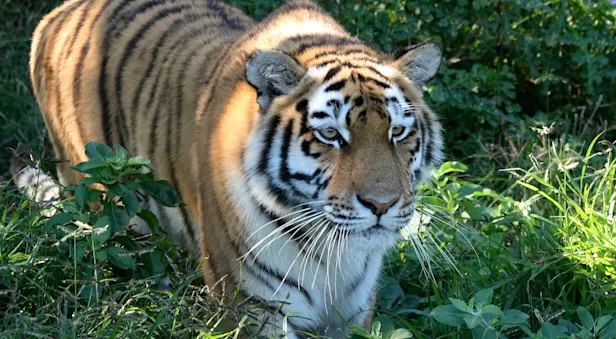Asian Elephant Facts | India Wildlife Guide
The Asian or Asiatic elephant is the largest living land animal in Asia and is considered endangered, with between 25,000 and 33,000 left in the wild. The Asian elephant tends to grow to around 7 to 12 feet in height and weighs between 6,500 and 11,000 pounds.
There are many differences between the Asian and African elephant. The Asian elephant is smaller than its African counterpart. It has smaller ears, only one semi-prehensile “finger” at the tip of its trunk instead of two, four nails on each hind foot as opposed to three, 19 pairs of ribs rather than 21, and a more arched back. Additionally, while the foreheads of African elephants are flat, the Asian elephant’s forehead has two hemispherical bulges. The female Asian elephant usually lacks tusks; if tusks are present (in which case they are called “tushes”), they are barely visible and only seen when the female opens her mouth. Asian elephant males may also lack tusks. Called makhnas, these elephants are particularly common in the Sri Lankan elephant population.
Asian elephants are widely domesticated and are used for forestry, tourism and ceremonial purposes; however, wild elephants can be seen as well. In the wild, elephant herds follow seasonal migration routes. It is the oldest elephant’s task to remember and follow the traditional migration routes, which are defined around the monsoon seasons, frequently between the wet and dry zones. Farmers’ crops are often destroyed along these well-worn routes, and it is not uncommon for elephants to be killed in the resulting conflicts.
On average, Asian elephants live 60 years in the wild and 80 years in captivity. They consume 10 percent of their body weight each day, which for adults is between 375 and 450 pounds of food. They need 21 to 53 gallons of water per day and use more for bathing. They sometimes scrape the soil, as they search for minerals.

























